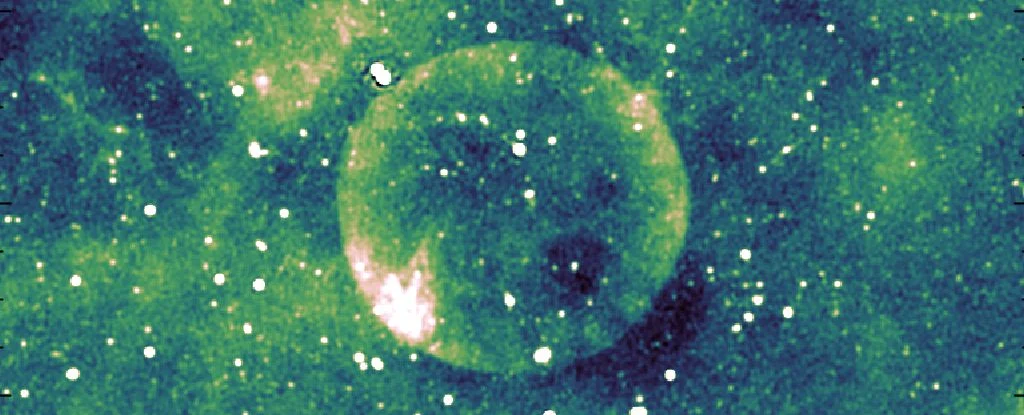
‘Perfect’ Cosmic Sphere Baffles Astronomers: Supernova Remnant’s Symmetry Deepens Mystery
A strangely symmetrical sphere, thousands of light-years away, has caught the attention of astronomers, igniting a cosmic puzzle. Using radio wavelength data from the Australian Square Kilometre Array Pathfinder (ASKAP), scientists have spotted what they're calling a near-perfect sphere, thought to be a supernova remnant (SNR). Dubbed 'Teleios,' from the Greek word for 'perfect,' this object's unusual symmetry is prompting questions about its origins and distance.
The amount we've learned about our universe is truly staggering with mind-blowing discoveries. Still, in the vastness of space, enigmas exist. One of those puzzles is Teleios itself — SNR G305.4–2.2, which has the appearance of near-perfect symmetry.
Why is this supernova remnant so perfectly spherical? That is what astrophysicists like Miroslav Filipović from Western Sydney University in Australia are trying to discover.
"The supernova remnant will be deformed by its environment over time," Filipović explained of the rarity for such an SNR. "If one side of the explosion slams into an interstellar cloud, we'll see a squashed shape. So, a near-perfect circle in a messy universe is a special find."

Key Findings and Lingering Questions
The analysis, submitted to the Publications of the Astronomical Society of Australia, indicates that Teleios glows faintly in radio wavelengths, hinting at a Type 1a supernova origin. This type of supernova involves a binary star system featuring a white dwarf. While these supernovae are valuable for measuring cosmic distances, determining Teleios's exact distance has proven difficult.
Current estimates suggest Teleios is either 7,175 light-years away (making the sphere 46 light-years across) or 25,114 light-years away (yielding a colossal 157 light-year diameter). These potential distances place its age either under 1,000 years or over 10,000 years, respectively. A third theory is also considered, which could mean the supernova is closer than previously expected.
“This presents us with an opportunity to make inferences about the initial supernova explosion, providing rare insight into one of the most energetic events in the universe," Filipovic co-authors.
One of the biggest questions is an inability to pin down how far away Telios is. The researchers were able to work out estimates for the distance to Teleios, but couldn't narrow it down beyond two options – around 7,175 light-years, and around 25,114 light-years.
As you can imagine, both of these distances would mean different things for the evolutionary history of Teleios. Because things look smaller the farther away they are, the two distances would yield vastly different sizes for the bubble. At the nearer distance, the supernova remnant would be 46 light-years across. At the greater distance, it would be 157 light-years across.
The lack of expected X-ray emissions further complicates matters. Another possibility is that Teleios is the remnant of a Type Iax supernova. However, for this to be true, it would need to be significantly closer, around 3,262 light-years away.

Why is Teleios So Symmetrical?
Supernova remnants are notorious for their asymmetry, often shaped by interactions with interstellar matter and the explosion's initial dynamics. Teleios bucks this trend, showcasing an almost unbelievably 'perfect' circular symmetry. While perfect SNRs have been witnessed before in dwarf galaxies, its symmetry deepens the enigma.
Despite questions without answers, Teleios represents an incredible opportunity to gain a rare glimpse of cosmic events. Future observations are expected to further illuminate the origins of this rare circular galactic SNR.
Ultimately, the discovery of Teleios highlights the boundless mysteries that continue to emerge from our cosmos. The unique characteristics of this supernova remnant serve to prompt ongoing investigations that help explain some of space's biggest puzzles.
What do you think? Share your theories or any questions raised by this mysterious object in the comments below!